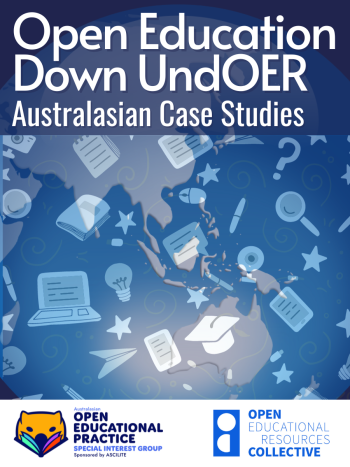
Open Educational Resources (OERs) are freely accessible and openly licensed teaching and learning materials that can be reused, shared, revised and remixed. OERs may be an individual module or learning object or entire courses or textbooks. Teaching staff can use OERs to:
When you are using OER, you have the flexibility to:
| 1 | reuse content in its unaltered/verbatim original format |
| 2 | retain copies of content for personal archives or reference |
| 3 | revise content to suit specific needs |
| 4 | remix content with other similar content to create something new |
| 5 | redistribute or share content with anyone else in its original or altered format |

 Open Education Down UndOER: Australasian Case Studies
Open Education Down UndOER: Australasian Case Studies
